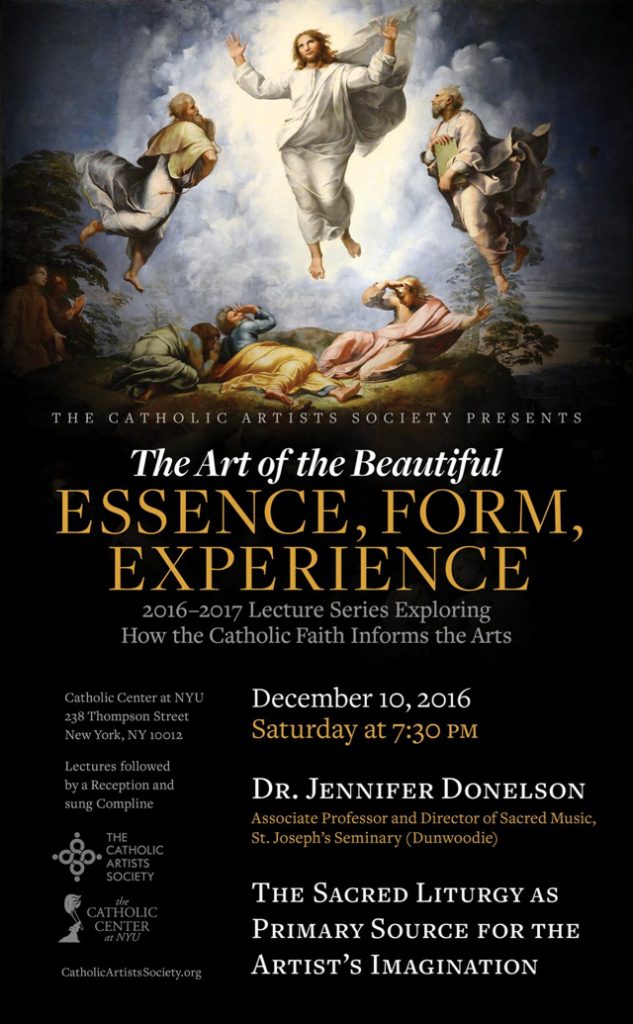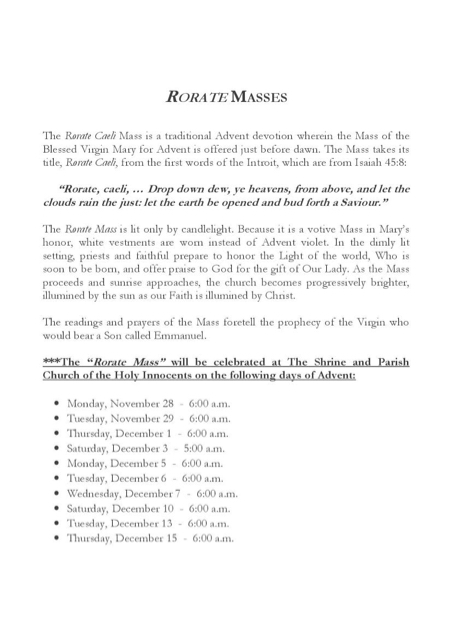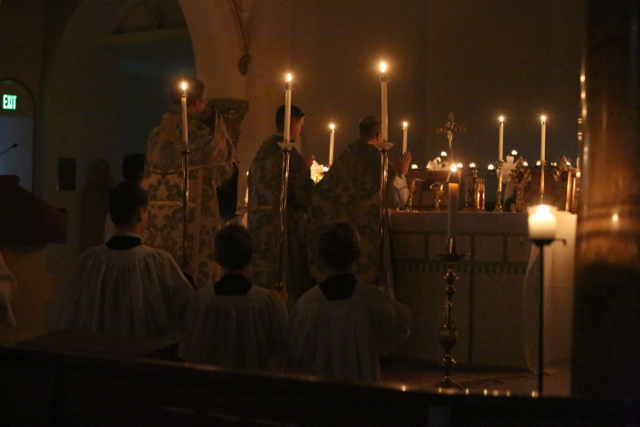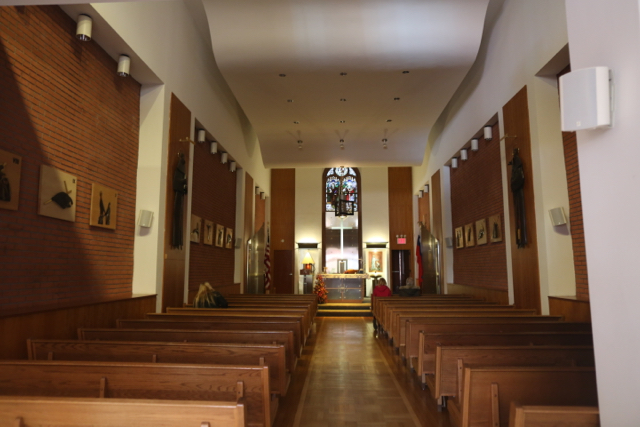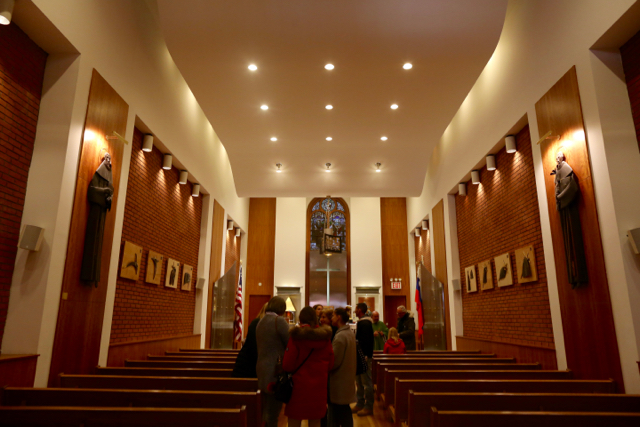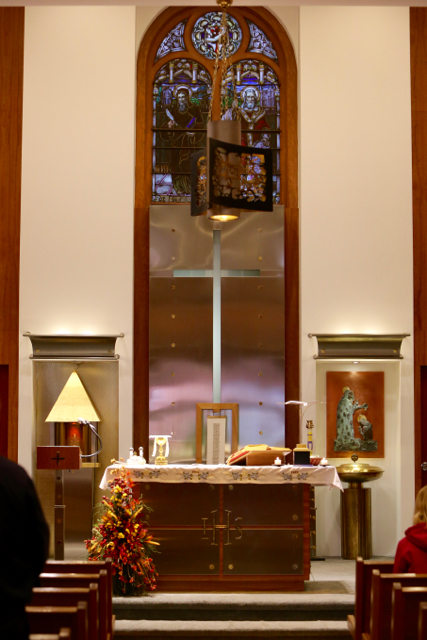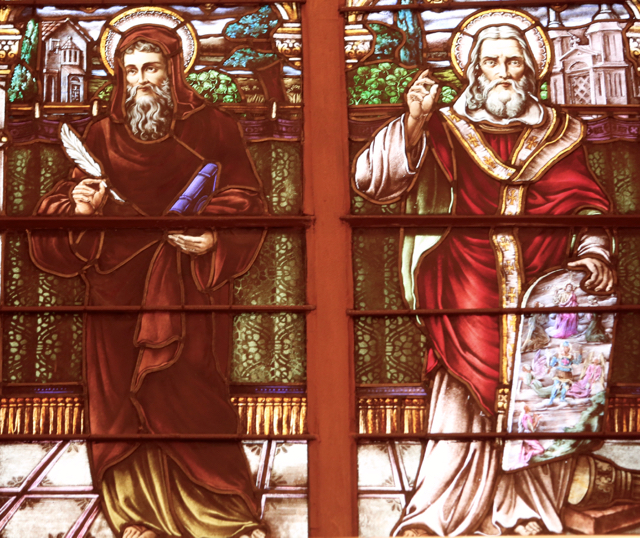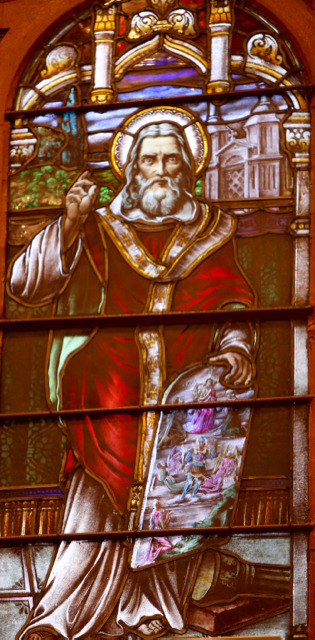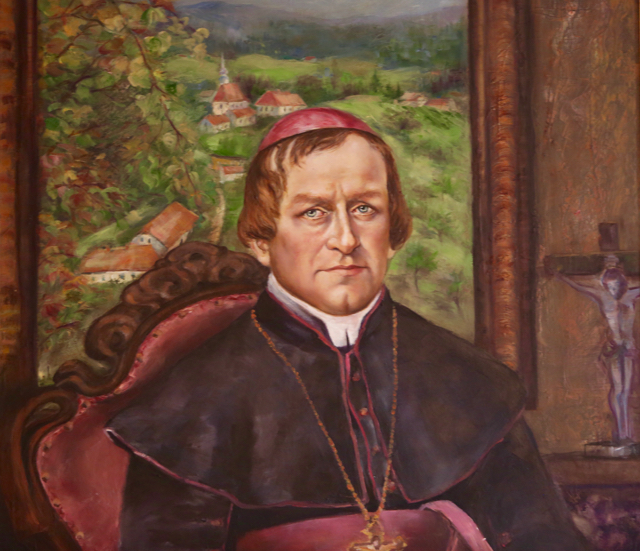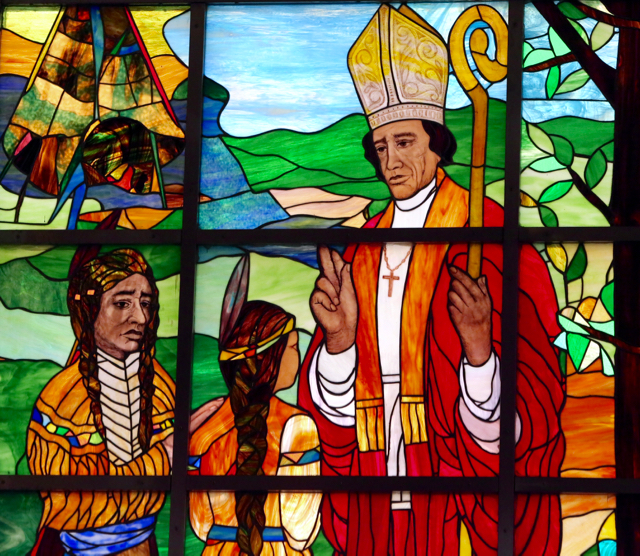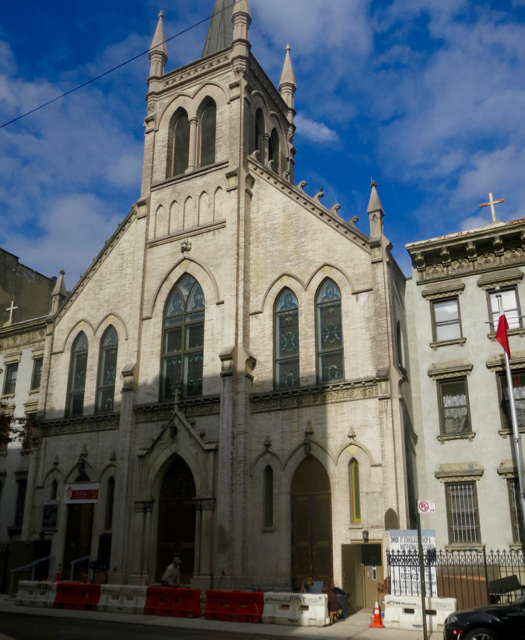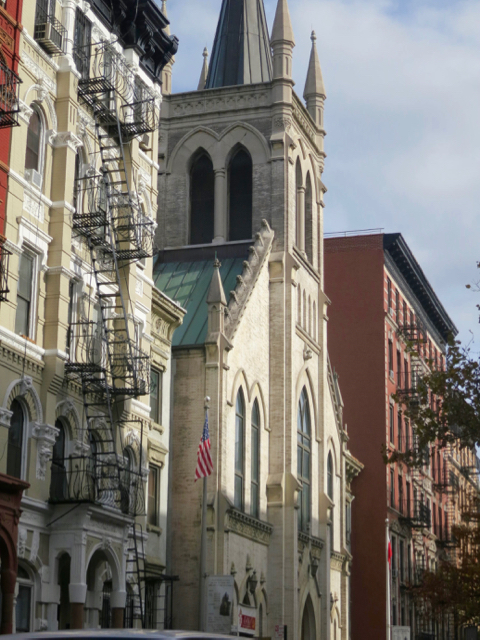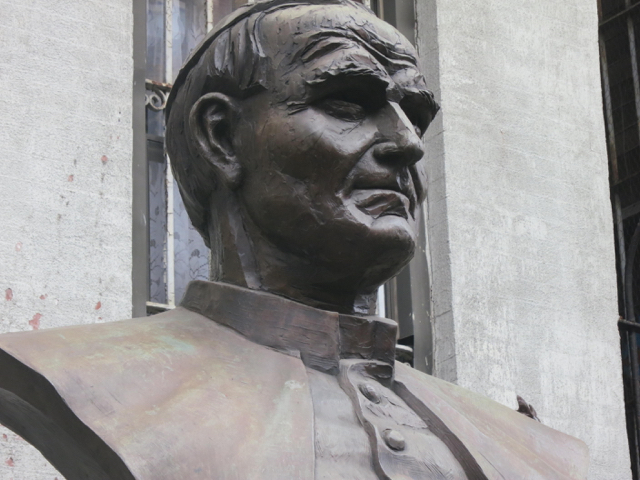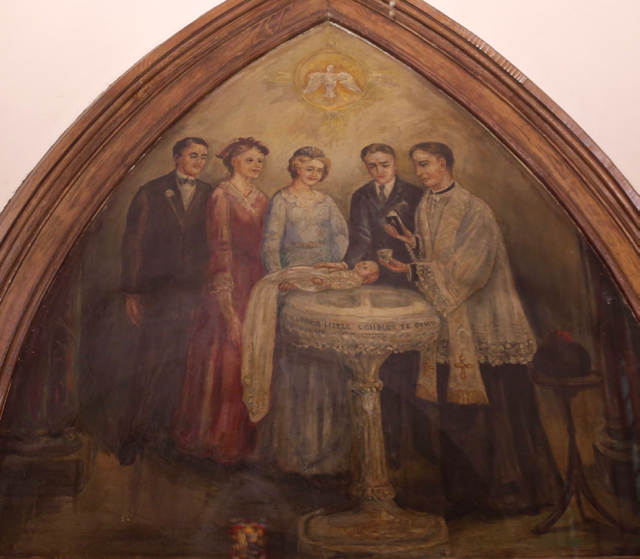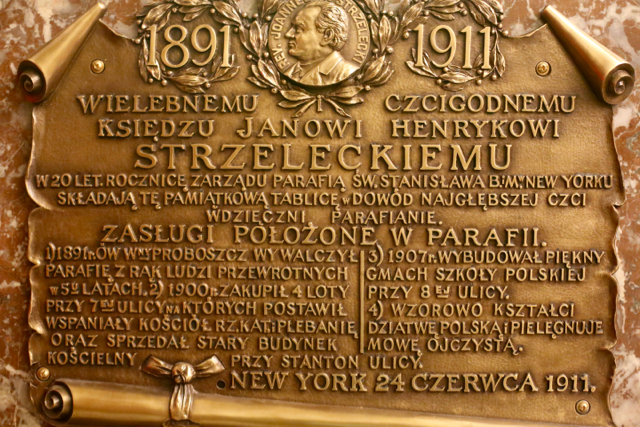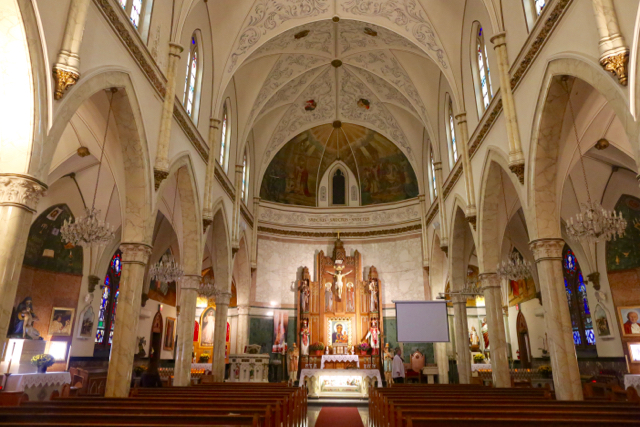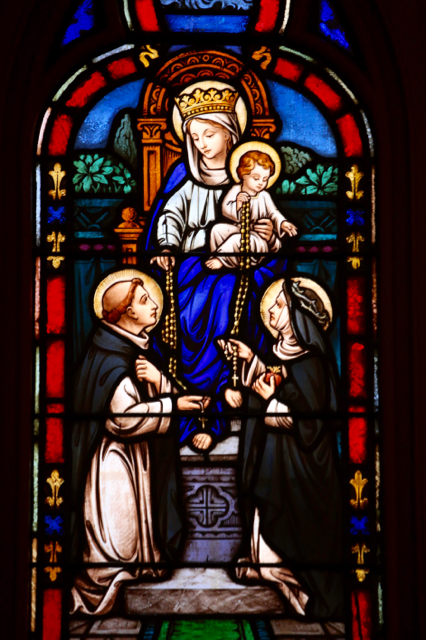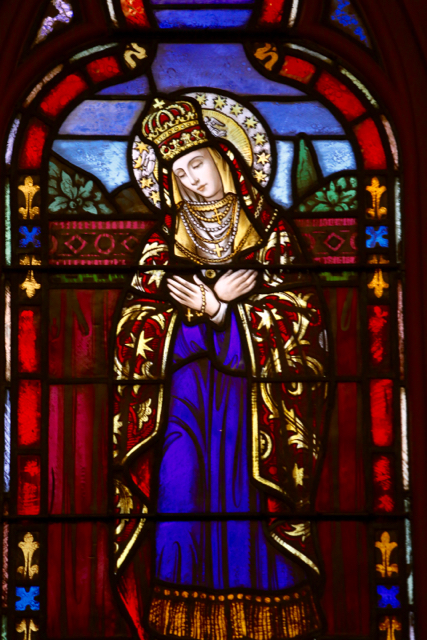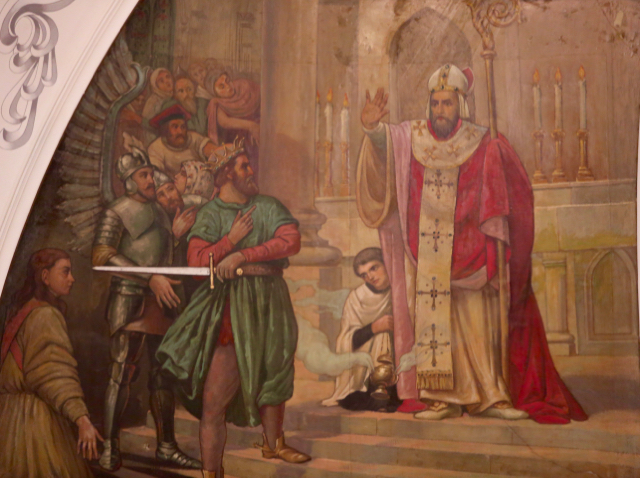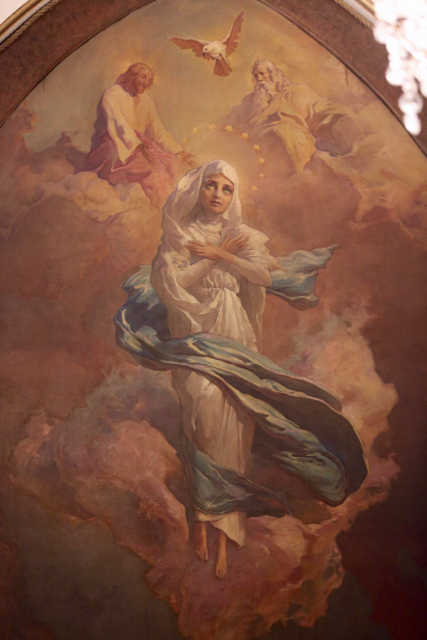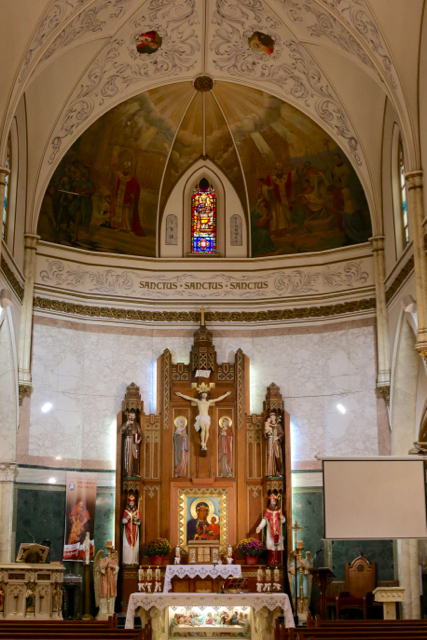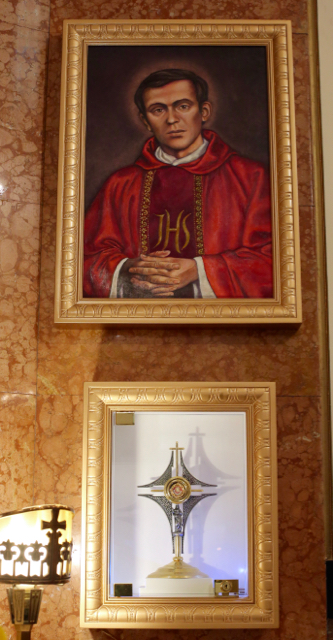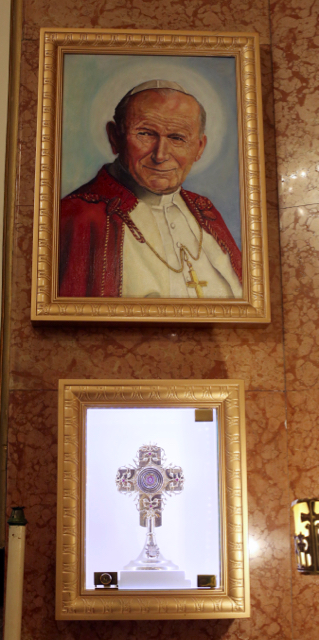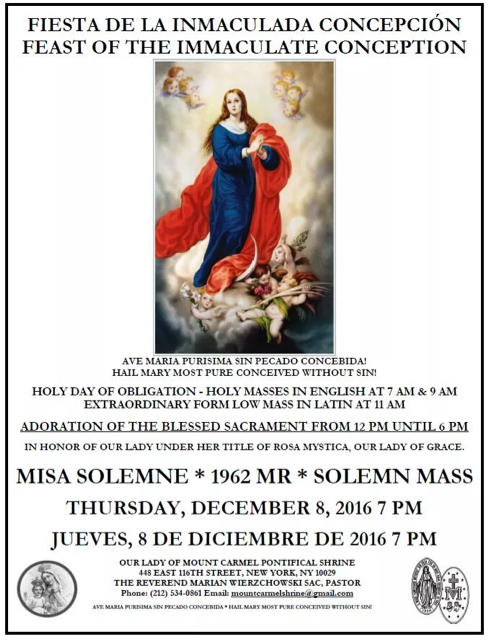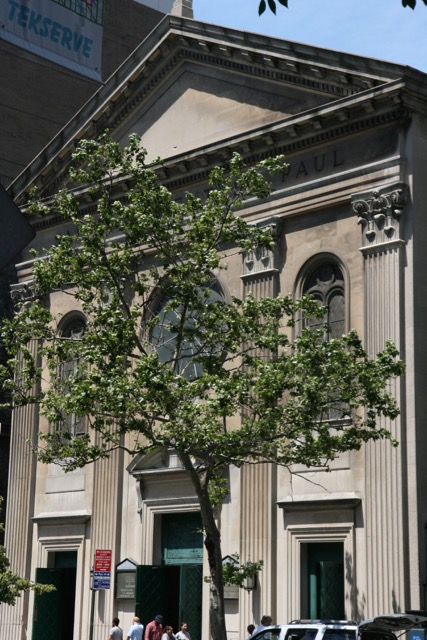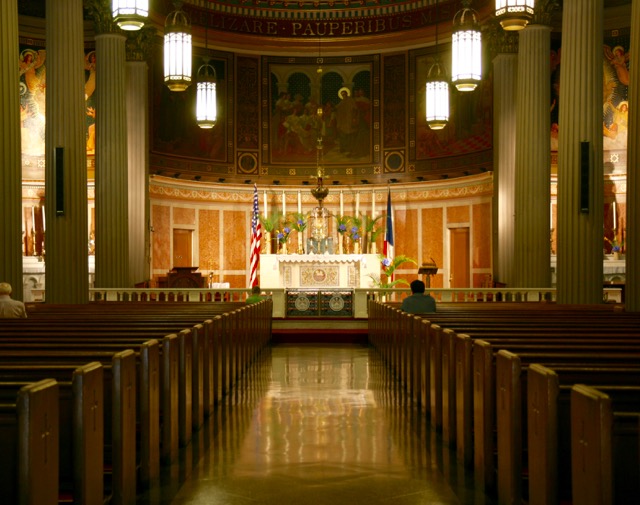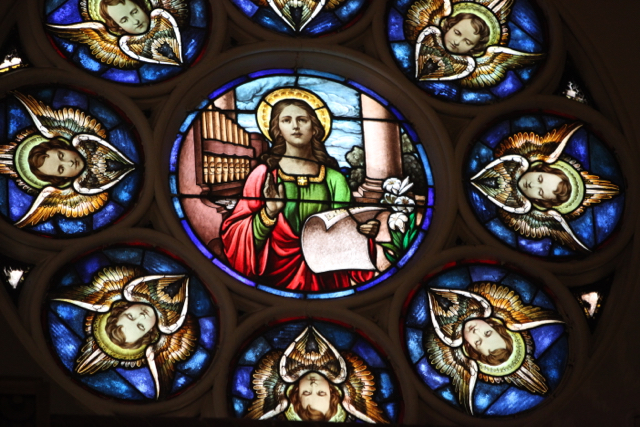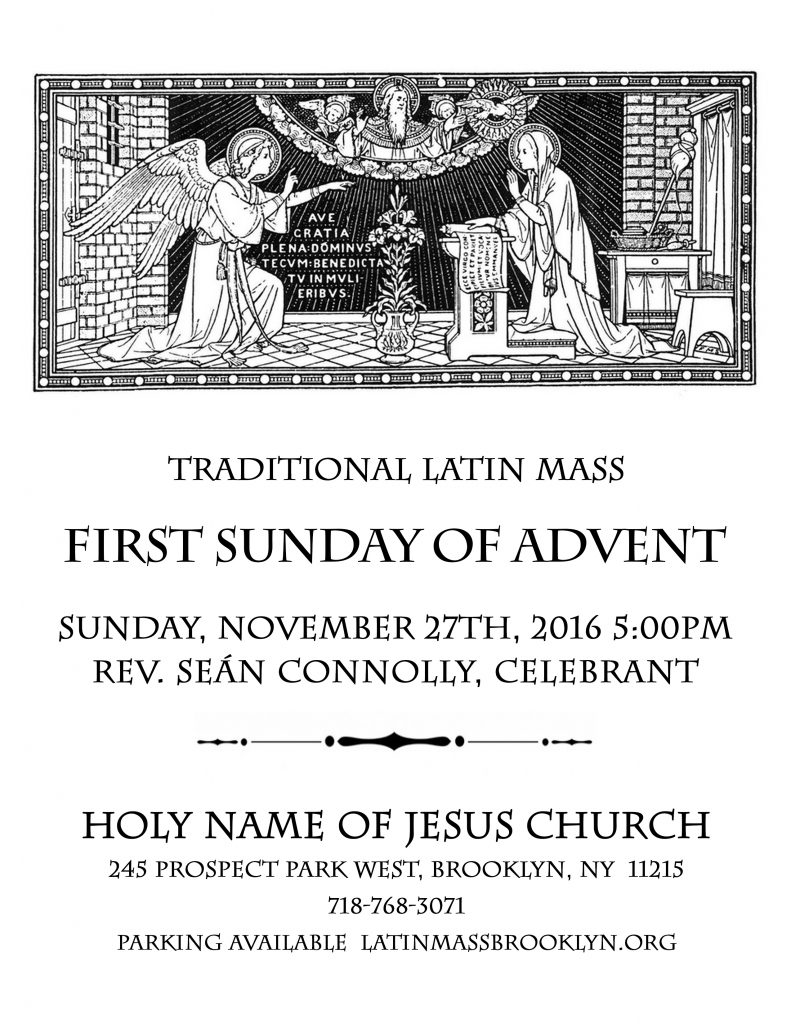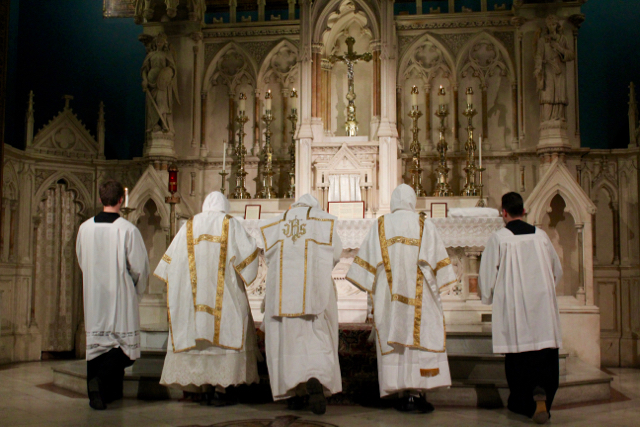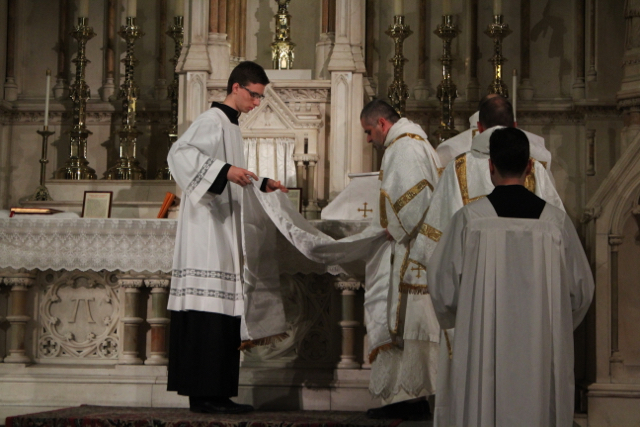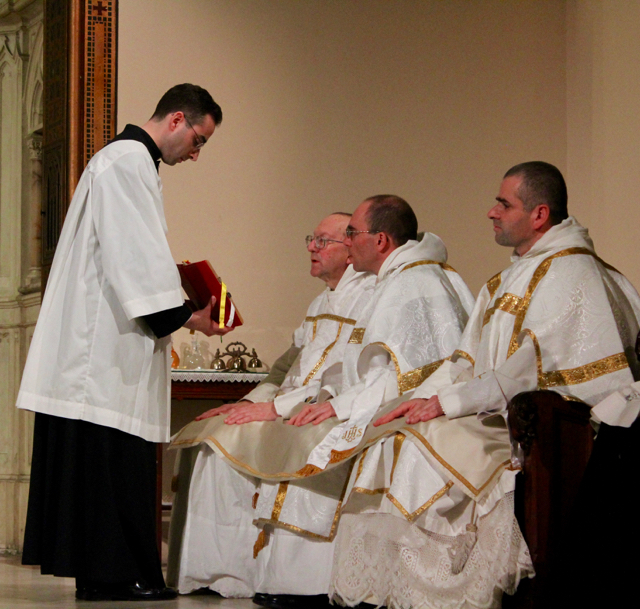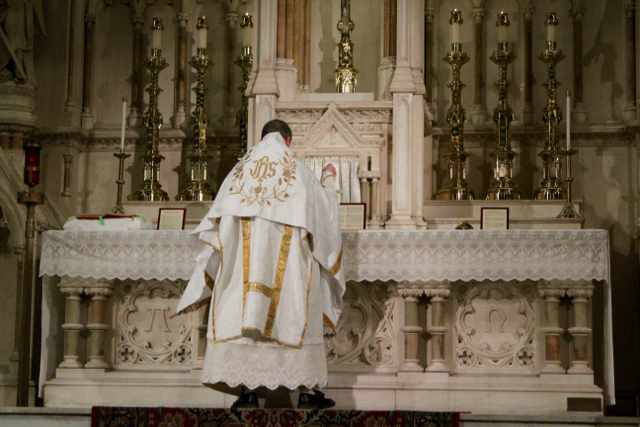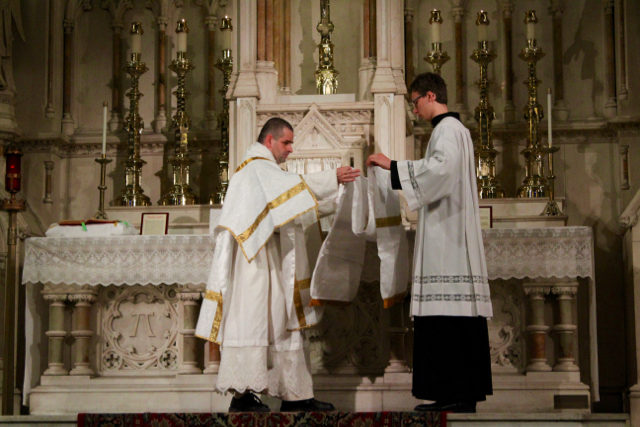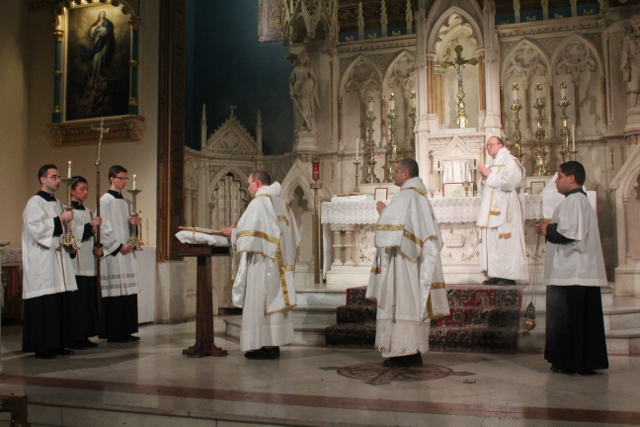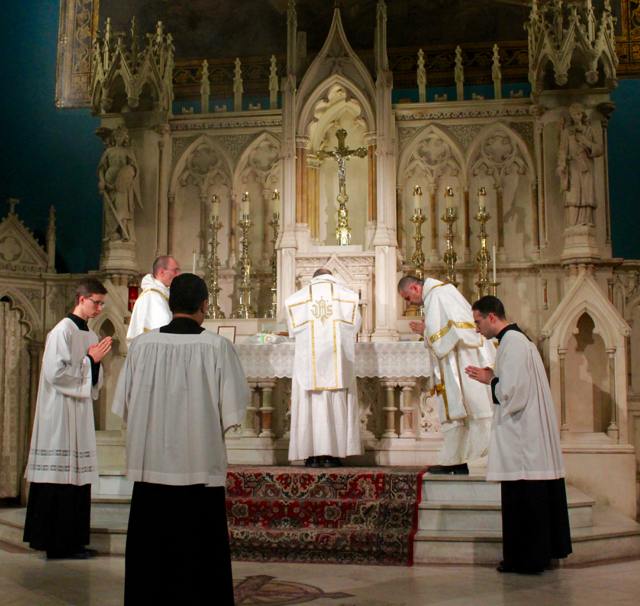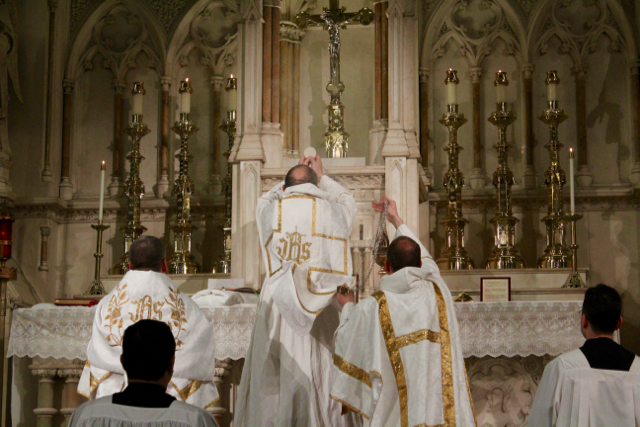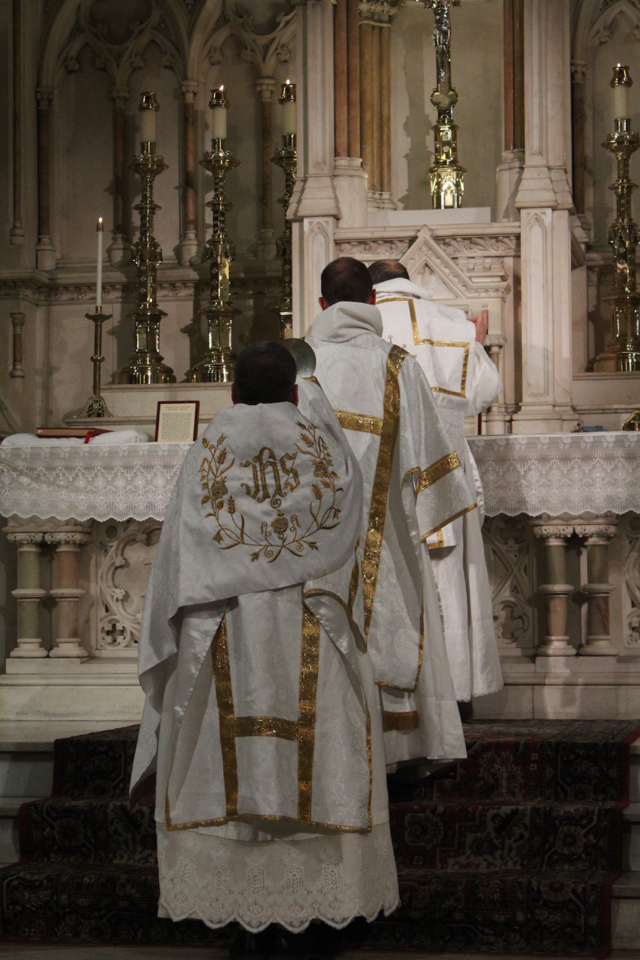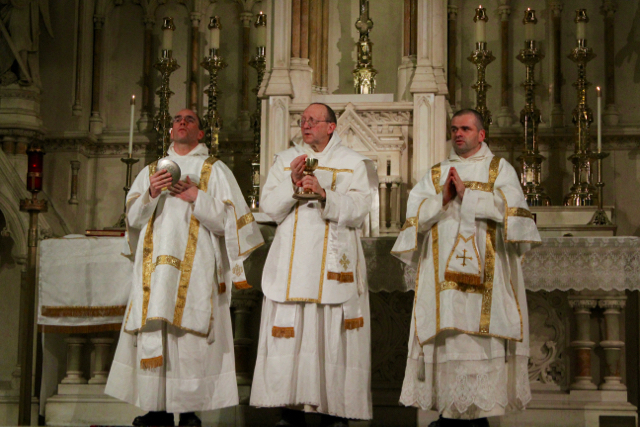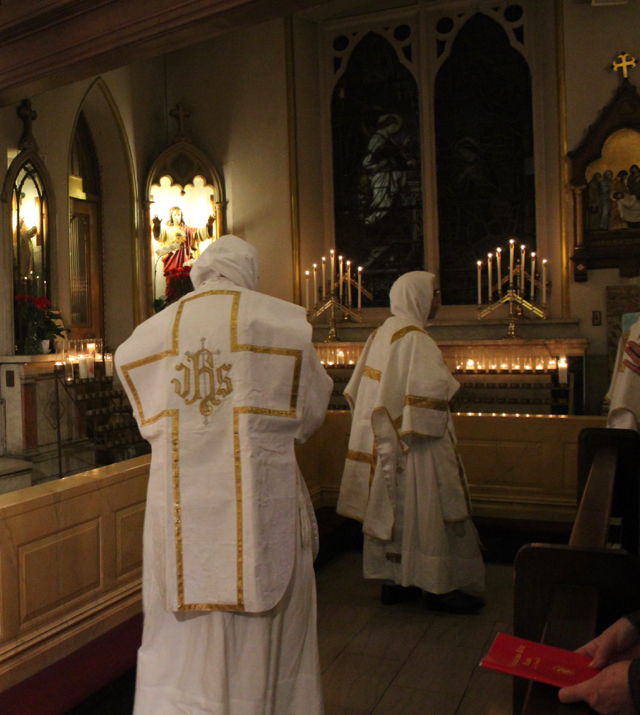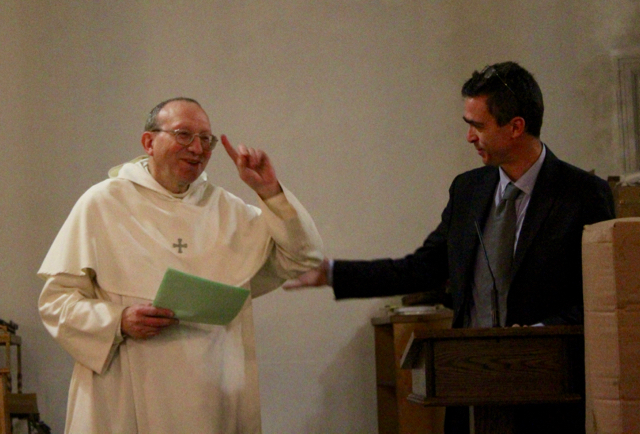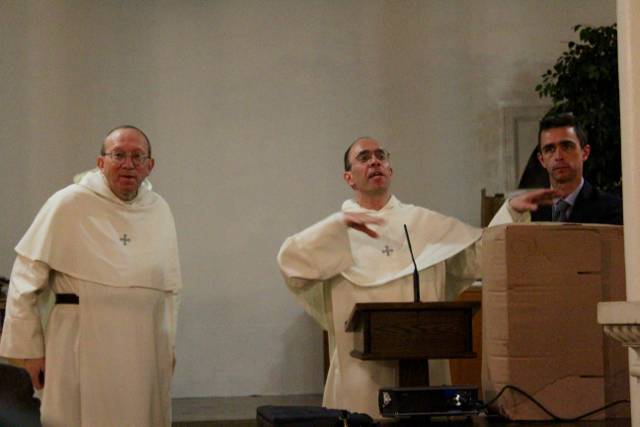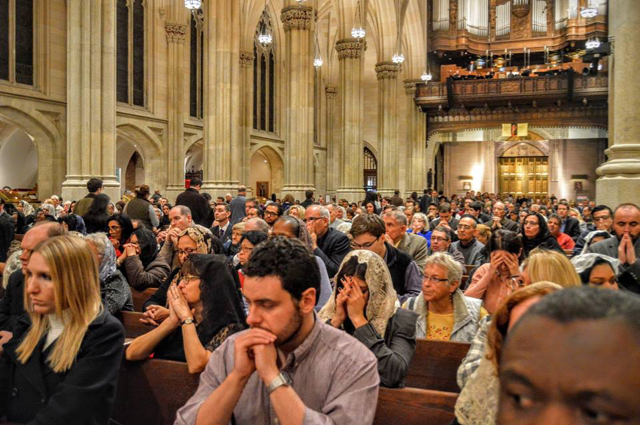27
Nov
25
Nov
Rorate Masses
Posted by Stuart ChessmanAt Holy Innocents, New York:
(Courtesy of Eddy Toribio)
At St. Mary’s, Greenwich, CT:
Saturday, December 17th, at 6:30 AM.
25
Nov
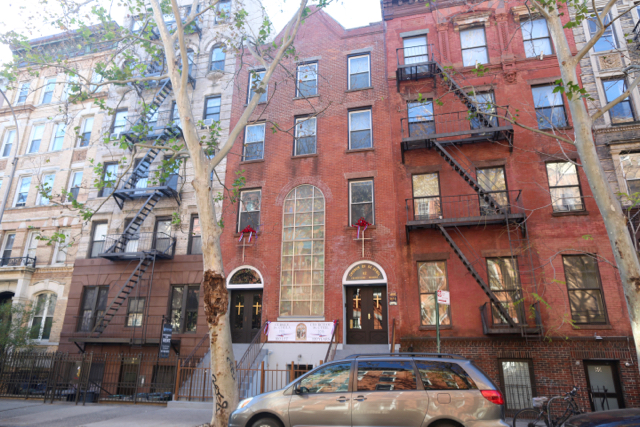
(Above) The unprepossessing facade of St. Cyril’s (center).
St. Cyril
62 St. Mark’s Place
St. Mark’s Place, the “Fifth Avenue” of the East Village, features all kinds of businesses – more and often less reputable – operating out of storefronts and walk-ups in various states of disrepair. In the midst of this is St. Cyril’s church. It is one of that handful of Manhattan Roman Catholic parishes that never made the transition from the early years of poverty in basements, brownstones or tenements to a proper church or school (one also thinks of the old parish of Our Lady of Guadalupe or of St. Joseph in Battery Park City).
St Cyril’s parish was organized in 1916 at this location. It is the national church of the Slovenes. The patrons were St Cyril and Methodius. At some point this was shortened to St. Cyril – perhaps because of the existence of the parish of St. Cyril and Methodius of the Croats? (In Europe Croats and Slovenes are next-door neighbors but in New York City their churches are on opposite sides of town). St. Cyril has always been a Franciscan parish.
Now the Slovenes are one of the more obscure nationalities making up the Archdiocese of New York. They are a Slavic people inhabiting lands directly adjacent to Italy and Austria. The Slovenes were the first Slavic nation to convert to Christianity around 800 – in other words, well before the missionary endeavors of the patrons of this church, the “Apostles to the Slavs.” Over the centuries the Slovenes were almost fully integrated in the surrounding German culture of the Holy Roman, then of the Austrian Empire, yet always retained their own nationality. And after an interim period last century in Woodrow Wilson’s Yugoslavia Slovenia has been independent since 1991.
Most Slovenes who came to the United States migrated to areas with mining activity. But the small New York community is in part attributable to women skilled in weaving straw hats! Domžale (Domschale) is a town where the weaving of hats used to be a prominent industry. The women who did this work found their skills much in demand in the New York millenary industry of around 1910.
The visitor to a still functioning ethnic parish of this neighborhood would expect some kind of relic from a past age – perhaps decrepit but sheltering unusual images and paintings. Nothing prepares him for the surprise of encountering an ultra-modern interior in perfect condition! For the interior of St Cyril was entirely rebuilt in 1997. But for a few items – liked the stained glass windows of the patrons or of Frederic Baraga – all of the art of the church also was created at that time by Slovenian artists. Even the traditional image of the Madonna of Brezje (Pirkendorf) is a new copy from 1997. Indeed, St. Cyril may be the most successful modern interior of a New York Catholic church since St Catherine of Siena (1930). Even though its relative success is largely due to eschewing the grotesque faults of post 1950’s “modern” Catholic churches and to the unity of its décor.
The interior of St. Cyril’s: (above) lights out; (below) illuminated.
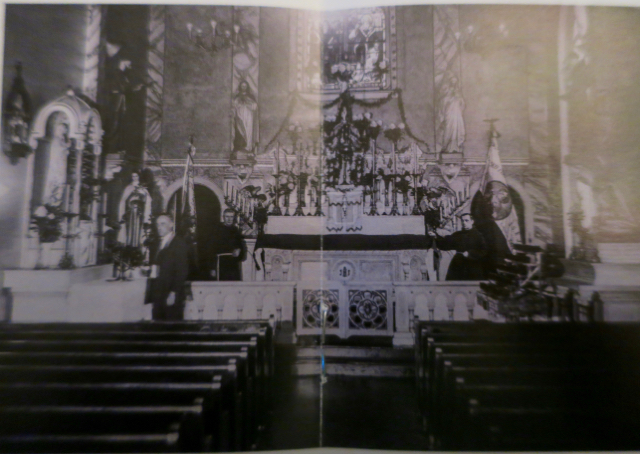
(Above) An old picture of the interior (from:The Church of St. Cyril: 100th Anniversary 1916-2016). The original furnishings seem to have disappeared before the installation of the Frederic Baraga window in 1986.
(Above and below) an inheritance from the past: the window of Saints Cyril and Methodius.
It is all very Central European – highly reminiscent of similar structures in Austria or Germany. On a recent visit, I noted the same to be true of the very small but well dressed congregation. My Slovenian is virtually nonexistent, but with my Rascher loden hunting jacket (designed in Germany, made in Poland) I felt I fit it in very well. But there is at least one significant difference between the New York Slovenes and their Teutonic neighbors back home: the friendly welcome the visitor receives at St. Cyril’s stands in greatest possible contrast to the suspicious, glaring eyes that usually greet the foreigner in Catholic churches of the German-speaking nations.
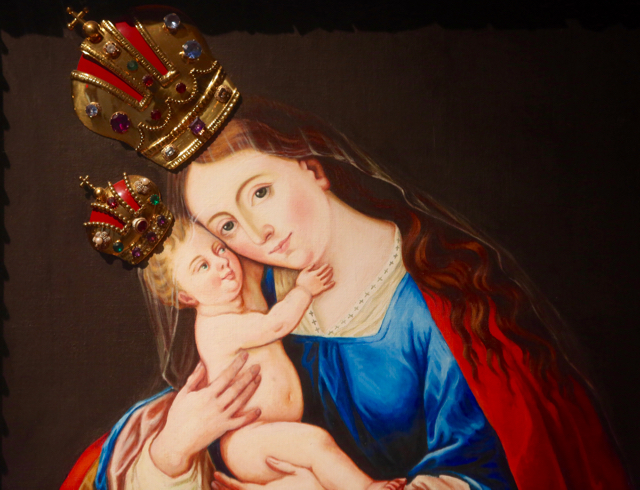
(Above) Our Lady “Help of Christians” of Brezje; the “Lourdes of Slovenia.”
(Above) Subject to correction by Slovenes, I believe this is a painting of Blessed Anton Martin Slomšek, 19th century bishop, author and advocate of Slovene culture. (Below) Window of Venerable Frederic Baraga, first Bishop of Marquette.
Things have not gone that well for the Church in the “old country” since independence. The percentage of Slovenes identifying themselves as Catholic has plummeted since 1991 to some 57.8 % in 2002 ( the date of – apparently – the last census which inquired as to religious belief). Even fewer believe in God.2) In 2013 the two archbishops of Slovenia resigned in a major financial scandal. 3)
Yet, even though this tiny parish celebrates only one mass – in Slovene – on Sunday, St Cyril’s soldiers on. Indeed, the parish’s 100th anniversary was celebrated in grand fashion in October of this year by the archbishop of Ljubljana, the largest city of Slovenia. The mass was followed by a dinner dance at he New York Athletic club at which Cardinal Dolan spoke. As is evident from their church, these Slovenes seem to dispose of financial resources – and ecclesiastical and political connections – far exceeding those of the average New York parish! I do hope they can keep this parish going – a testament to the true diversity that used to mark the Archdiocese of New York.
1) The facts in this article are largely taken from The Church of St. Cyril: 100th Anniversary 1916-2016 (Parish publication, 2016)
2) https://en.wikipedia.org/wiki/Religion_in_Slovenia
3) http://www.ncregister.com/daily-news/slovenias-two-archbishops-resign-over-billion-dollar-investment-collapse;
25
Nov
St. Stanislaus
101 East 7th Street
Strolling east from Astor Place we enter the so-called “East Village” – actually the northern reaches of the Lower East Side. Now this is an area with “character. ” It seems – at least in appearance – to stubbornly resist the radical upgrading occurring almost everywhere else on the island of Manhattan. In recent decades the East Village has been better known for its drug scene and ancillary industries: tattoo parlors, “purveyors of Day-Glo paint” etc. 1) But there is much more here than just the alleged “counterculture.” The East Village abounds in curious buildings and relics left by earlier ages and earlier inhabitants: Germans, Irish, Jews, and Italians. Moreover, this neighborhood still shelters perhaps the only remaining presence of Christian and Catholic European ethnicity on Manhattan Island. Every year chips away at this remnant: Kurowicky’s Meats closed in 2007; Surma Ukrainian shop closed just this year after 98 years in business. But much of interest still remains.
Of these nations the Ukrainians of the Eastern rite are by far the most visible, with their splendid church of St George, built as recently as the early 1970’s, and their various restaurants and other institutions scattered over the neighborhood. Just over the northern border of this area we have on East 15th Street the church of St. Mary of the closely related Ruthenians. The Orthodox are also well represented, with St Nicholas of Myra church on Tompkins Square (Ruthenians) and the Orthodox cathedral of the Protection of the Holy Virgin on East 2nd street. I want to focus here, however, on Latin Catholics. I have described elsewhere in this series the “mainstream” parishes (originally Irish, German and Italian – later Hispanic) that existed (or until recent Archdiocesan actions, did exist) in the East Village. Here we will cover two ethnic holdouts.
St. Stanislaus is the surviving Polish national parish in Manhattan. Poles never acquired in the New York region the prominence they have in Chicago and elsewhere in the Midwest. And even then, one thinks of Greenpoint, Brooklyn or even Eastern Long Island, rather than Manhattan, as the major centers of Polish life in New York. But wherever they are, Poles have jealously defended their religion, language and culture. For them, the union of Faith and Nation is self-evident. And however abhorrent this formula is to the Conciliar Church, we cannot question its effectiveness – just ask the surviving leadership of the former Soviet Union.
This parish was founded in 1875; our main source for this early period tells a convoluted tale of ongoing strife among parishioners that was only resolved in the 1890’s. A saga more typical of the life of New York parishes in the first half of the 19th century before Archbishop Hughes took over! The current church was dedicated in 1901. By 1913 the church had 10,000 parishioners and a parochial school with 369 boys and 381 girls. Since 1986 this parish has been under the care of the Pauline Fathers.2)
The visitor enters through the doors of the plain façade into a dark vestibule or narthex. It abounds with older statues, icons and paintings – it serves as a veritable chapel. This is fortunate, since outside of Sundays – and presumably other mass times – the nave of the church is usually closed. There are also some curious things to read. An unexpectedly beautiful metal plaque from 1911 honors the pastor who really created the present parish in the time before the First World War. A later plaque commemorates the Requiem Mass celebrated here on July 2, 1909 for the famous actress Helena Modjeska. And then there is a poster in Polish pointing out the occult and satanic significance of certain medallions commonly worn by women today. I think to myself: I am going to like this place….
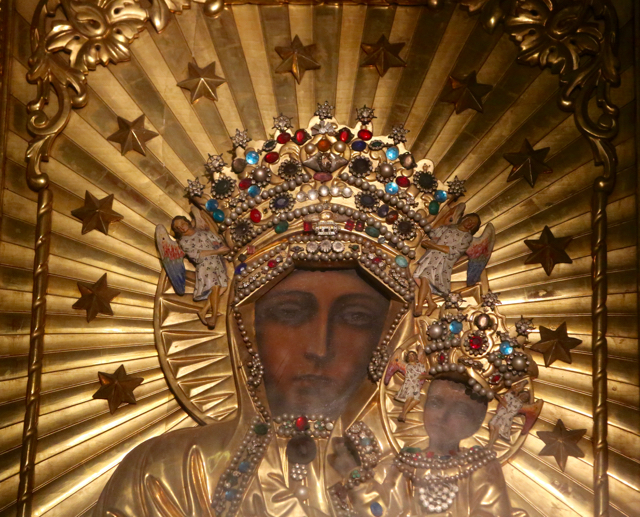
(Above and Below) Art in the vestibule:Our Lady of Czestochowa in a gold frame, an early naive painting of a christening.
(Above) Fine plaque commemorating Fr. John Strzelecki, who in essence refounded the parish after 1892 and built the present structures.
After the vestibule the nave of the church is somewhat of a disappointment. In its architecture and its dimensions, St. Stanislaus parish is a modest affair. It overflows with images and art from all the different ages of the parish’s life, but seems to have suffered from thoroughgoing modernizations in pre-conciliar times. (Judging from the form of the altar and the green stone sheathing, these restorations probably dates from sometime between the late 1920’s and the 1950’s – probably towards the latter part of that period). And since then, new devotions and shrines have been added continually: images and relics of Pope John Paul II and Fr. Jerzy Popiełuszko, a shrine of Divine Mercy, etc. It all leaves a mixed impression – a heterogeneous jumble of all kinds of artifacts and styles. It’s quite a contrast with the lavishly decorated, unrestored Polish parishes I have visited in Chicago, New Haven, Yonkers or Jersey City. Yet everything is in good order well maintained.
(Above) St. Stanislaus. The figure on the left is wearing armor of a 17th century Polish “winged hussar.” (Below) the wide variety of styles in this church is evident.
The masses seem to be plain but correct examples of he Novus Ordo. I don’t much appreciate, however, the large screen to the right of the altar upon which the words of the liturgy are projected. (Wasn’t the Novus Ordo intended to make the mass clear to the congregation?). As I prepare after mass to take pictures of some of the stained glass – which is not bad – suddenly all but two of the windows are plunged into darkness. But for those two windows, the stained glass is only visible because of artificial lighting on the outside…
(Above and below) Images and relics of Fr. Jerzy Popiełuszko and Pope John Paul II.
In contrast to most other Manhattan churches, this parish obviously still benefits from ongoing immigration. There are several masses celebrated in Polish and English on Sundays and weekdays; the parish still claims 900 registered parishioners. Numerous parish societies – many of them traditional activities and devotions – are still active, just like they did in the “good old days.” 3) On my recent visit the parish priest was announcing a dance social, a fundraising drive to repair the church’s steeple and news on the parish’s Polish school. So there seems to be continuing vitality. Moreover, the strong national commitment of this parish coexists with an apparent willingness to reach out to the broader community of Catholics and non-Catholics of the neighborhood. And even if the artistic expression of the new devotions are of uneven aesthetic quality, they nevertheless testify to an ongoing, vital Catholic life. St. Stanislaus parish is no museum!
1) An observation of the late Seymour Britchky
2) “St. Stanislaus Bishop & Martyr Roman Catholic Church” – Parish History (Parish brochure); The Catholic Church in the United States of America, Vol. 3 at 372-74. (New York, The Catholic Editing Company, 1914)
3) “St. Stanislaus Bishop & Martyr Roman Catholic Church” – Parish Life (Parish brochure)
24
Nov
21
Nov
St. Vincent de Paul Sold
Posted by Stuart Chessman“Hotelier Jeffrey Dagowitz has snapped up three Chelsea properties for $50.4 million, including the Church of St. Vincent de Paul.
The Archdiocese of New York sold the three parcels — 123 West 23rd Street, 116 West 24th Street and 120 West 24th Street — to Dagowitz earlier this month, according to documents filed with the city on Monday. Together, the church-owned buildings span 32,600 square feet.”
The former French national parish of New York. Built in 1869, and the witness of many historic events. Closed by the Archdiocese after a heroic struggle over the years by parishioners – who in recent decades were mainly from Haiti and African French-speaking countries.
See our description of this church.
19
Nov
(above) Window in the church of St. Cecilia, East Harlem
On Tuesday, November 22, the parish of St. Mary, Greenwich will celebrate the feast of Saint Cecilia with a Sung Mass at 7:30 in the evening.
19
Nov
18
Nov
A solemn Dominican Rite mass was celebrated at Holy Innocents church yesterday evening. The sacred ministers are members of the Fraternity of St. Vincent Ferrer, who are visiting North America.
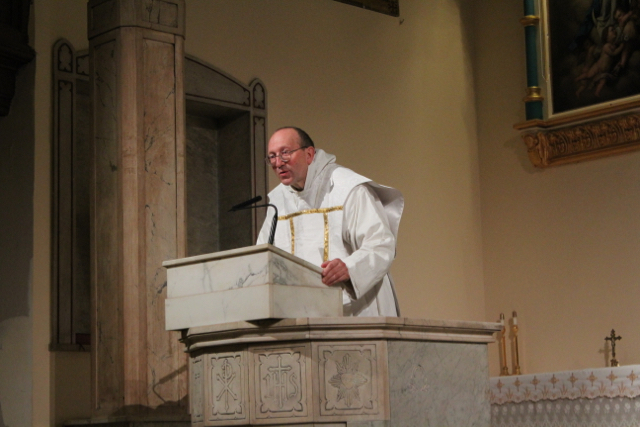
(Above) The founder of the Fraternity of Saint Vincent Ferrer, Fr Louis-Marie de Blignières, was the celebrant and preached at the mass. He focussed on St. Vincent Ferrer as very much a saint for our time – now, as then, a period of crisis for the Church. St Vincent practiced both contemplation and a preaching apostolate.
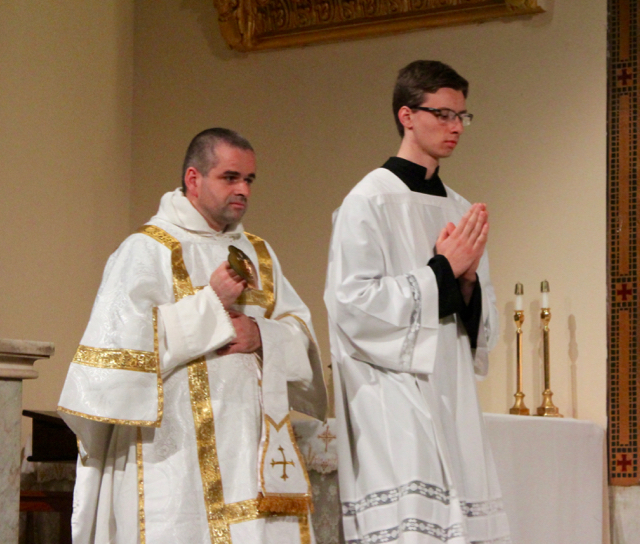
(Above) The “Pax Instrument” as used in the Dominican Rite.
(Above and below) A lively presentation followed.
The Fraternity is dedicated to the Dominican way of life. What is emphasized is contemplation, the Traditional liturgy and Thomistic philosophy. Their house in France is unique fro these features – certainly among the various orders of friars today.
The fraternity, with 23 members and growing steadily, is building a large church and monastery complex in France and needs $370,000 to complete this work.
At its foundation in 1979 associated with Archbishop Lefebvre, since 1988 the Fraternity of St Vincent Ferrer has been recognized by the Vatican. It is separate from the Dominican order even if it maintains cordial relations with some Dominican Friars. This “regular” status does not at all preclude critical commentary of aspects of the Church today: liturgy, moral theology , ecumenism…..
16
Nov
One Picture Says it All
Posted by Stuart ChessmanAttendance at Monday evening’s traditional Mass at St. Patrick’s Cathedral.
photo courtesy of Arrys Ortanez.
Contact us
Register
- Registration is easy: send an e-mail to contact@sthughofcluny.org.
In addition to your e-mail address, you
may include your mailing addresss
and telephone number. We will add you
to the Society's contact list.
Search
Categories
- 2011 Conference on Summorum Pontifcum (5)
- Book Reviews (95)
- Catholic Traditionalism in the United States (24)
- Chartres pIlgrimage (17)
- Essays (176)
- Events (670)
- Film Review (7)
- Making all Things New (44)
- Martin Mosebach (34)
- Masses (1,343)
- Mr. Screwtape (46)
- Obituaries (15)
- On the Trail of the Holy Roman Empire (22)
- Photos (347)
- Pilgrimage Summorum Pontificum 2021 (7)
- Pilgrimage Summorum Pontificum 2022 (6)
- Pilgrimage Summorum Pontificum 2023 (4)
- Sermons (79)
- St. Mary's Holy Week 2019 (10)
- St. Mary's Holy Week 2022 (7)
- St. Mary's Holy Week 2023 (7)
- St. Mary's Holy Week 2024 (6)
- Summorum Pontificum Pilgrimage 2024 (2)
- Summorum Pontificum Pilgrimage 2025 (1)
- The Churches of New York (198)
- Traditionis Custodes (49)
- Uncategorized (1,369)
- Website Highlights (15)
Churches of New York
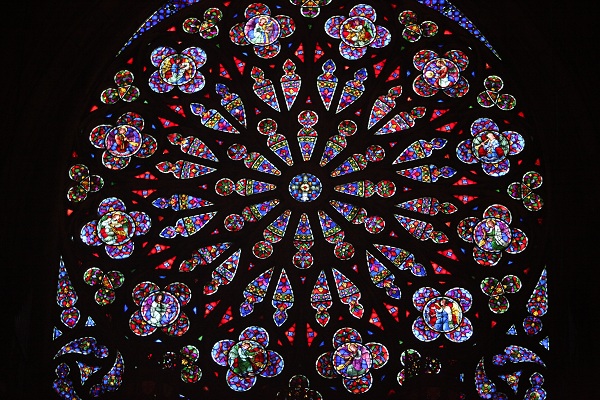
Holy Roman Empire
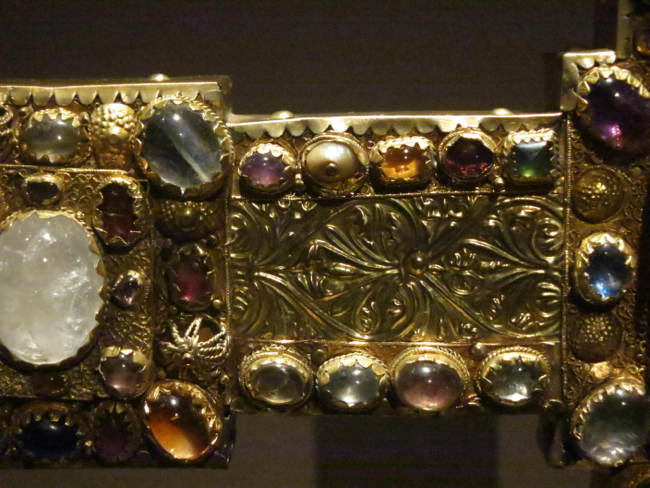
Website Highlights
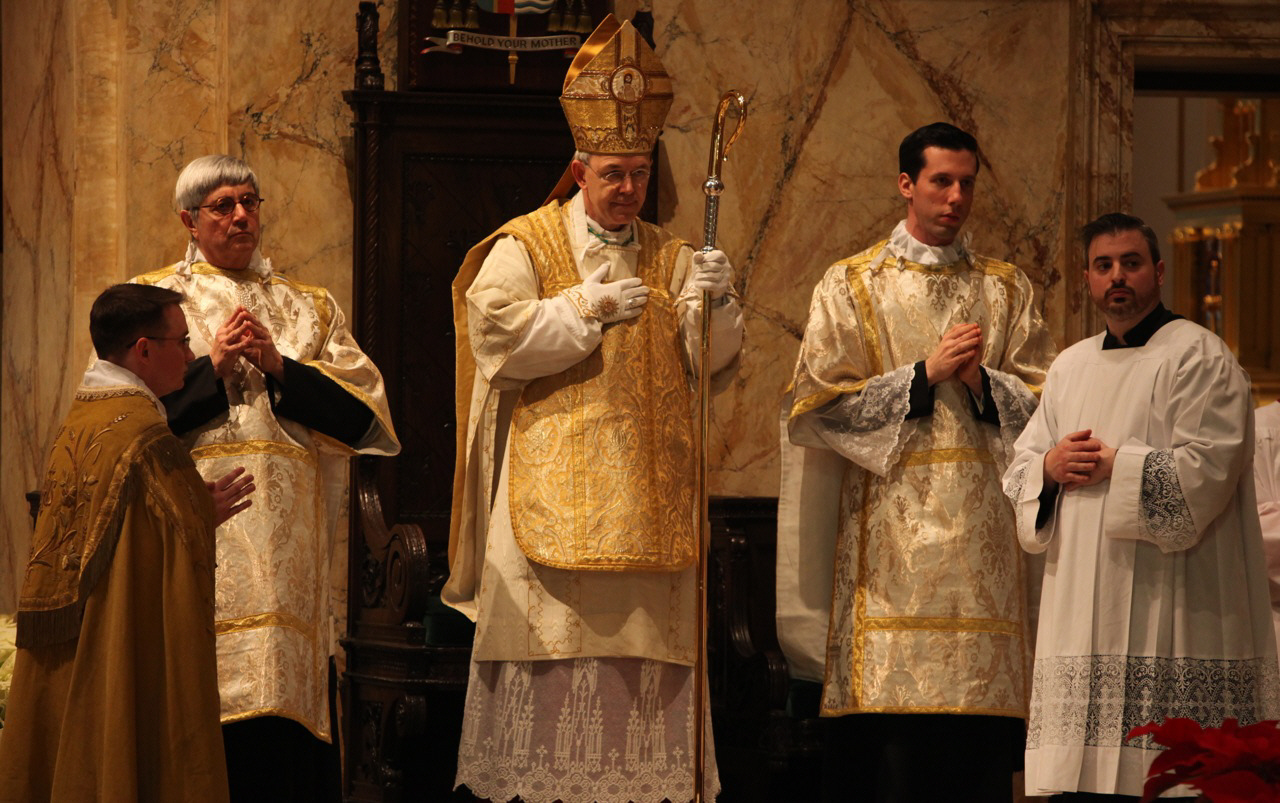
Archives
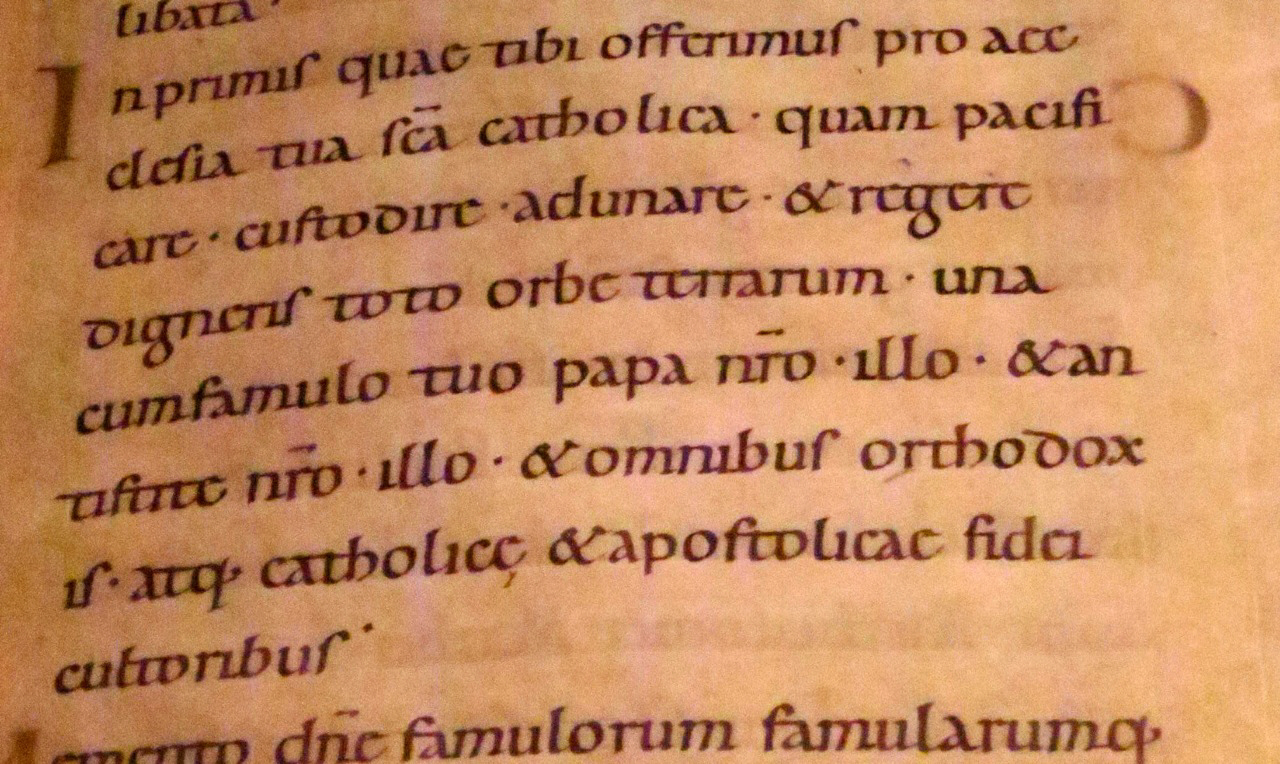
[powr-hit-counter label="2775648"]
